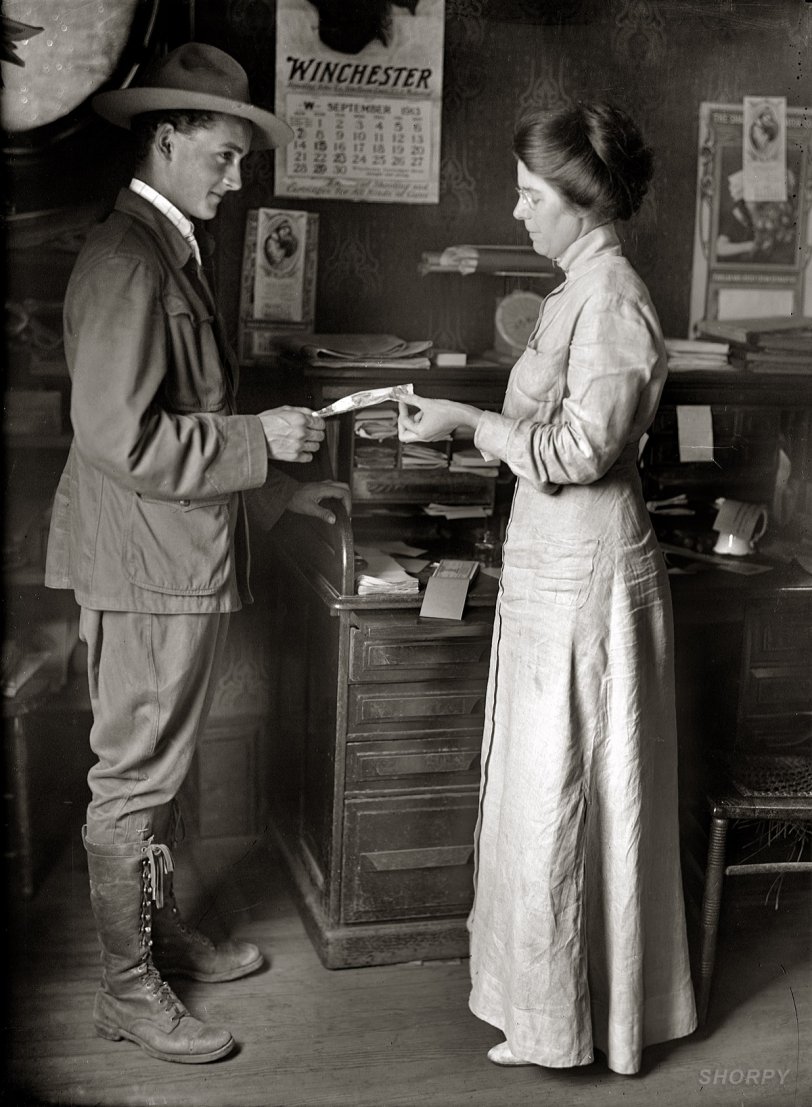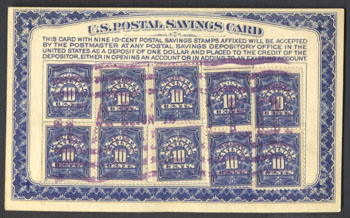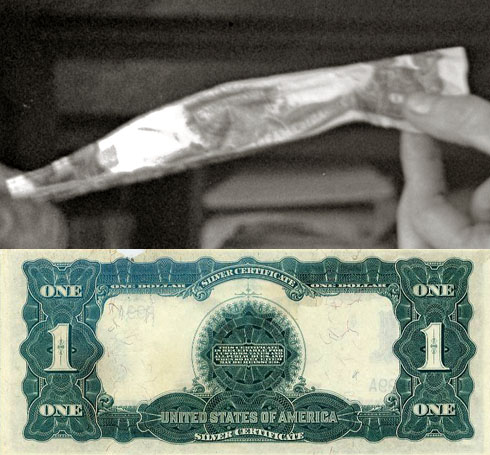


Framed or unframed, desk size to sofa size, printed by us in Arizona and Alabama since 2007. Explore now.
Shorpy is funded by you. Patreon contributors get an ad-free experience.
Learn more.

- Baldwin 62303
- Baldwin VO-1000
- Cold
- No expense spared
- Tough Guys
- Lost in Toyland
- And without gloves
- If I were a blindfolded time traveler
- Smoke Consumer Also Cooks
- Oh that stove!
- Possibly still there?
- What?!?
- $100 Reward
- Freeze Frame
- Texas Flyer wanted
- Just a Year Too Soon
- WWII -- Replacing men with women at the railroad crossing.
- Yes, Icing
- You kids drive me nuts!
- NOT An Easy Job
- I wonder
- Just add window boxes
- Icing Platform?
- Indiana Harbor Belt abides
- Freezing haze
- Corrections (for those who care)
- C&NW at Nelson
- Fallen Flags
- A dangerous job made worse
- Water Stop
Print Emporium
A Scout Is Thrifty: 1913

1913. "Boy Scouts, postal savings; Scouts depositing." I know there's someone out there who can translate that. Harris & Ewing glass negative. View full size. UPDATE: The Scout is "Gordon F. Chance, patrol leader." Details here.
More Postal Savings

Whatever the two in the photo are holding is not a postal savings card. It looks like it has "1"s in the corners like a dollar bill but does not appear to be one. It could be a prop.
[It is a dollar bill -- the reverse of a "black eagle" silver certificate. The Postal Savings system accepted cash deposits. - Dave]

Savings bond stamps
The ten and 25-cents stamps that were saved and redeemed for a U.S. Savings Bond were not the same as the Postal Savings. The Savings Bond stamps could, however, be purchased at post offices. The issuance of a Postal Savings certificate is depicted in this photo.
-- Frank R. Scheer, Railway Mail Service Library
Scouts Depositing
In the early days of the Scout movement, saving money in a bank account was a requirement for advancement in Scout rank. Each rank required saving more money - not a lot by today's standards, but in 1913 saving a dollar in the bank meant a lot.
Irresponsible Shorpy
How irresponsible to implicitly promote "saving" when all of our economists are busy calling for greater liquidity and free-flowing credit from the banking system. Shame on Shorpy. Now let's all go take out a loan; it's good for the country.
Tresses
WOW, that woman has a healthy head of hair. I'd love to see what it looked like unbunned, so to speak.
Winchester
How politically incorrect; a calendar advertising guns and ammunition in the local post office! This appears to be an inside shot with the tallest scout from the "Clicquot Club" post. Am guessing that the folders (passbooks?) those scouts are holding were related to the postal savings program.
Postal savings
This recent NY Times Op Ed piece says that "a new postal savings system should be part of America’s post-meltdown financial architecture."
Savings Stamps
I seem to remember buying savings stamps with my paper route money back in seventh or eighth grade. That would have been around '67 or '68, though, and they were turned into US Savings Bonds when the total was high enough. We did this in the classroom of my grammar school.
Saved
In many parts of the country in the old days, banks were not trusted as they are today and they were hard to get to if you lived out in the boondocks. The postal saving system allowed you to make deposits into an account at the Post Office or RFD carrier. Banks were prone to failure during panics and when they speculated unwisely or engaged in good old fraud.
Now things are different. When banks get in trouble today your money is safe because the government bails them out with your money and bankers don't have to go to Mexico or look for a job because of the "golden parachute" they can get that was invented in recent times. We have made great progress.
Postal Savings System
The Postal Savings System was a banking system run through the U.S. Postal Service. Its big advantage: federally guaranteed deposits. The federal guarantee eventually spread to deposits in the private banking system, rendering the PSS redundant.
Associating the Boy Scouts with the system was presumably a way to promote savings with the system as responsible behavior.
The USPS has a brief overview of the Postal Savings System here:
U.S. Post Office Postal Savings System
Dave, I remember in the years just after WWII, when I was 8 or 9, going to the Main Post Office (in Mobile) and buying postal savings stamps to post in a coupon-like book. In looking at wikipedia, it says that the Postal Savings System was established January 1, 1911.
These Boy Scouts are saving money, using U.S. Government postal savings instead of a (shaky) bank; presumably the woman works for the Post Office. (The USPS came later, 1972, I think.)
























On Shorpy:
Today’s Top 5